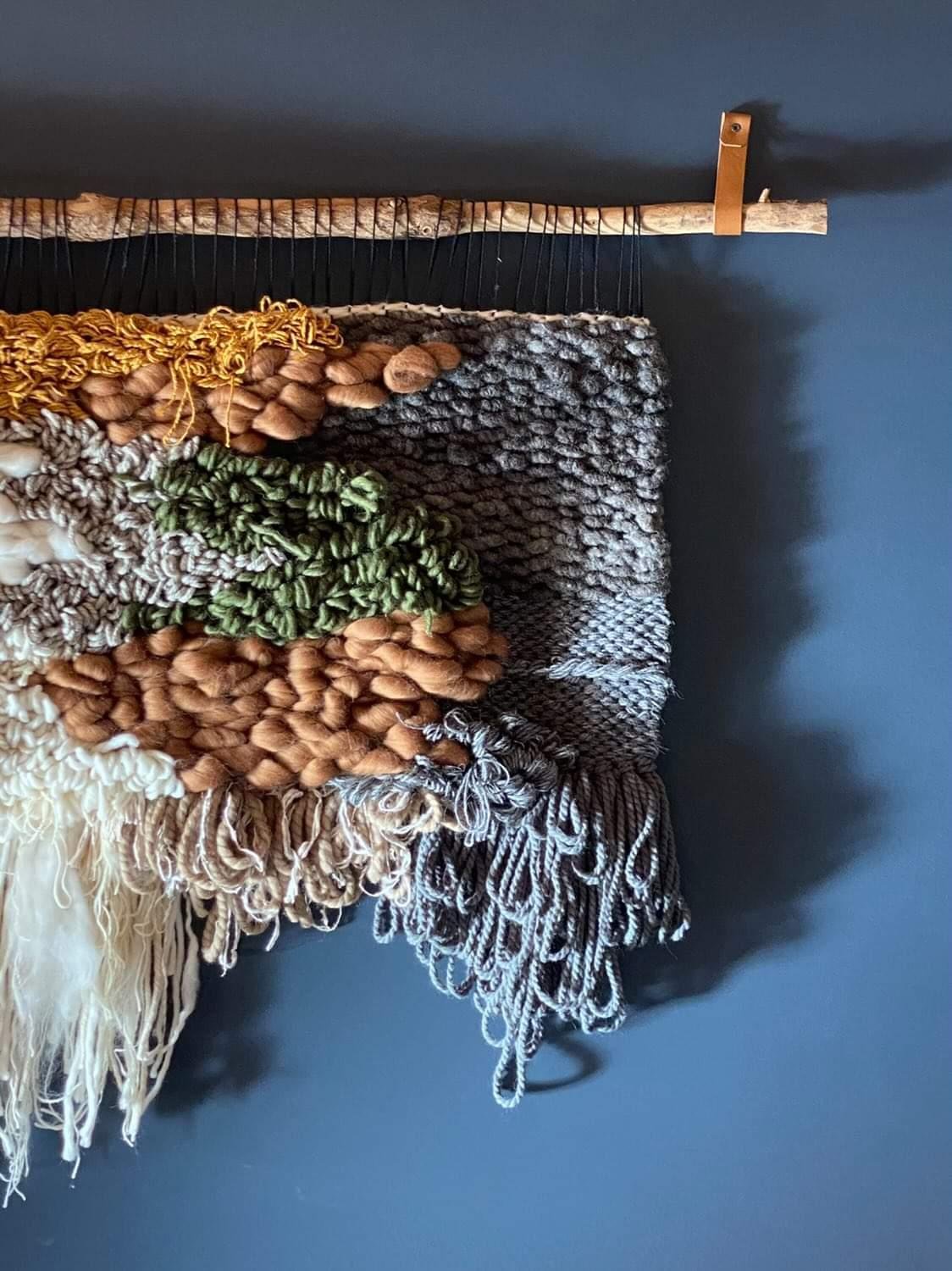Featured on CanvasRebel
Nicole, thanks for joining us, excited to have you contributing your stories and insights. We’d love to hear about when you first realized that you wanted to pursue a creative path professionally.
What started out as a break from my career as an Licsensed Athletic Trainer, learning about the historic applications of fiber art and the revolution of macrame and weavings of the 70s caused the first “what if” moment in my process. It was the first time I actually felt compelled to create my own art- mostly because “what if it looked cool.” I had already been a long time fan of Midcentury modern and vintage furniture. It wasnt until my father in law mentioned all his yarn and wool he had from shearing his sheep every year. Once I saw first hand his love for his animals, learned that process and found other like-minded, small business farmers and hand spinners- THAT is the moment I wanted to pursue this “hobby” as a true artistic profession. I wanted to not only create nature inspired wall art with natural materials, but I understood in turn I was supporting other artistic professions as hand-spinners, dyers, farmers and fiber cultivators, not big box stores offering synthetic blend fibers.
Awesome – so before we get into the rest of our questions, can you briefly introduce yourself to our readers.
I was born and raised in a small town in Pennsylvania, where I spent my summers playing in the woods on our family farm: wiffle ball, camping, and swimming in the creek with my siblings, aunts, uncles, and cousins are some of my most cherished memories. Prior to finding my passion in fiber arts, I studied Exercise Science and Athletic Training and ended up living and working in Philadelphia for nearly 8 years. This is where I learned to embrace the excitement of the city as equally as the calm of the countryside.
I married my husband, James, in 2015. Together we live a life driven by intention: James inspired me to dive deep into my love of textiles by introducing me to his family sheep farm, where we now gather the wool my art is made from. I relished in studying the history of fiber arts, its historic applications, and modern techniques. Since opening MHD, I have dedicated myself to creating earthy, timeless, textured art that is symbolic of my connection with nature.
In my transition to intentional living, I have experienced nature and its profound ability to ground me in a connection to the earth, and allow me room to grow into a more authentic version of myself. When you take in my art, it is my dream that you feel the warm, welcoming, soothing vibrations of the natural world and all it has to offer us.
What can society do to ensure an environment that’s helpful to artists and creatives?
Society can help artists and creatives by moving away from buying cheap, disposable items like fast fashion and home decor. Instead, supporting sustainable and unique creations not only reduces waste but also gives artists a chance to shine. By valuing handmade art and crafts, attending local art events, and advocating for art-friendly policies, we create a better environment for creativity to thrive.
Society can attempt to better understand the prices involved with art. I truly believe there is an artist and price range for everyone out there. I would love to see a society supporting artist and creatives by taking the time to search for their decor. Go meet the artist, share their work on social, save up for one of their art pieces, give them compliments and honor the process of cultivating a home full of meaningful art and quality decor.
What do you find most rewarding about being a creative?
The most rewarding aspect of my creative work, is when someone tells me that my work reminds them of something. Whether it be a memory from childhood, a place they traveled or an overall feeling of calmness. Peoples connection to my work is what drives me.
Contact Info:
Website: www.mosshounddesigns.com
Instagram: @mosshound_designs
Facebook: www.facebook.com/mosshounddesigns



